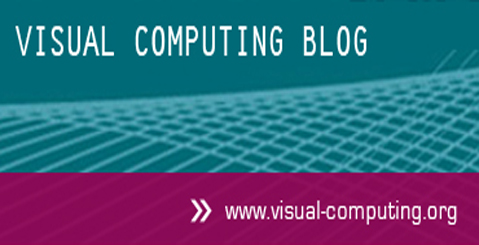C04 | Metrics for Mobile Visualization and Interaction Techniques through
“Research in the Large”
Models and metrics of visualization and interaction techniques can predict the time a person needs to understand presented information and to execute a task. Previous work mainly focused on basic models. What is missing are models and metrics for realistic use cases and novel interactive systems. We will upscale the quantitative investigations of visualization and interaction techniques to evaluate multiple factors at the same time. Using a research in the large approach, in which the apparatus is distributed to thousands participants through mobile applications stores, we will quantify the effect of different degrees of freedom for interactive visualizations and derive models that enable to predict users' performance.
Research Questions
What are the models behind human behavior in mobile hand interaction?
How does the virtual hand appearance influence interaction?
How can we quantify multi-factorial models of visualization and interaction using huge data sets through research in large?
Publications
- T. Dingler, R. Rzayev, A. S. Shirazi, and N. Henze, “Designing Consistent Gestures Across Device Types: Eliciting RSVP Controls for Phone, Watch, and Glasses,” in Proceedings of the CHI Conference on Human Factors in Computing Systems, R. L. Mandryk, M. Hancock, M. Perry, and A. L. Cox, Eds., ACM, 2018, pp. 419:1–419:12. doi: 10.1145/3173574.3173993.
- P. Knierim, V. Schwind, A. M. Feit, F. Nieuwenhuizen, and N. Henze, “Physical Keyboards in Virtual Reality: Analysis of Typing Performance and Effects of Avatar Hands,” in Proceedings of the CHI Conference on Human Factors in Computing Systems, R. L. Mandryk, M. Hancock, M. Perry, and A. L. Cox, Eds., ACM, 2018, pp. 345:1–345:9. doi: 10.1145/3173574.3173919.
- V. Schwind, K. Leicht, S. Jäger, K. Wolf, and N. Henze, “Is there an Uncanny Valley of Virtual Animals? A Quantitative and Qualitative Investigation,” International Journal of Human-Computer Studies, vol. 111, pp. 49–61, 2018, doi: 10.1016/j.ijhcs.2017.11.003.
- V. Schwind, P. Knierim, C. Tasci, P. Franczak, N. Haas, and N. Henze, ““These are not my hands!”: Effect of Gender on the Perception of Avatar Hands in Virtual Reality,” Proceedings of the 2017 Conference on Human Factors in Computing Systems (CHI′17), pp. 1577–1582, 2017, doi: 10.1145/3025453.3025602.
- P. Knierim et al., “Tactile Drones - Providing Immersive Tactile Feedback in Virtual Reality through Quadcopters,” in Proceedings of the CHI Conference on Human Factors in Computing Systems-Extended Abstracts (CHI-EA), G. Mark, S. R. Fussell, C. Lampe, m. c. schraefel, J. P. Hourcade, C. Appert, and D. Wigdor, Eds., ACM, 2017, pp. 433–436. doi: 10.1145/3027063.3050426.
- V. Schwind, K. Wolf, and N. Henze, “FaceMaker - A Procedural Face Generator to Foster Character Design Research,” O. Korn and N. Lee, Eds., Springer International Publishing, 2017, pp. 95–113. doi: 10.1007/978-3-319-53088-8_6.
- H. V. Le, V. Schwind, P. Göttlich, and N. Henze, “PredicTouch: A System to Reduce Touchscreen Latency using Neural Networks and Inertial Measurement Units,” in Proceedings of the ACM International Conference on Interactive Surfaces and Spaces (ISS), ACM, Ed., ACM, 2017, pp. 230–239. doi: 10.1145/3132272.3134138.
- V. Schwind, P. Knierim, L. L. Chuang, and N. Henze, ““Where’s Pinky?”: The Effects of a Reduced Number of Fingers in Virtual Reality,” in Proceedings of the Annual Symposium on Computer-Human Interaction in Play (CHI PLAY), B. A. M. Schouten, P. Markopoulos, Z. O. Toups, P. A. Cairns, and T. Bekker, Eds., ACM, 2017, pp. 507–515. doi: 10.1145/3116595.3116596.
- L. Lischke, V. Schwind, K. Friedrich, A. Schmidt, and N. Henze, “MAGIC-Pointing on Large High-Resolution Displays,” in Proceedings of the CHI Conference on Human Factors in Computing Systems-Extended Abstracts (CHI-EA), ACM, Ed., ACM, 2016, pp. 1706–1712. doi: 10.1145/2851581.2892479.
- V. Schwind and S. Jäger, “The Uncanny Valley and the Importance of Eye Contact,” in Mensch und Computer 2015 - Tagungsband, Oldenbourg Wissenschaftsverlag, 2016, pp. 153–162. doi: 10.1515/icom-2016-0001.
- A. Voit, T. Machulla, D. Weber, V. Schwind, S. Schneegaß, and N. Henze, “Exploring Notifications in Smart Home Environments,” in Proceedings of the International Conference on Human-Computer Interaction with Mobile Devices and Services Adjunct (MobileHCI), ACM, Ed., 2016, pp. 942–947. doi: 10.1145/2957265.2962661.
- T. Dingler, R. Rzayev, V. Schwind, and N. Henze, “RSVP on the go - Implicit Reading Support on Smart Watches Through Eye Tracking,” in Proceedings of the ACM International Symposium on Wearable Computers (ISWC), ACM, Ed., 2016, pp. 116–119. doi: 10.1145/2971763.2971794.
FOR SCIENTISTS
Projects
People
Publications
Graduate School
Equal Opportunity
FOR PUPILS
PRESS AND MEDIA
© SFB-TRR 161 | Quantitative Methods for Visual Computing | 2019.











